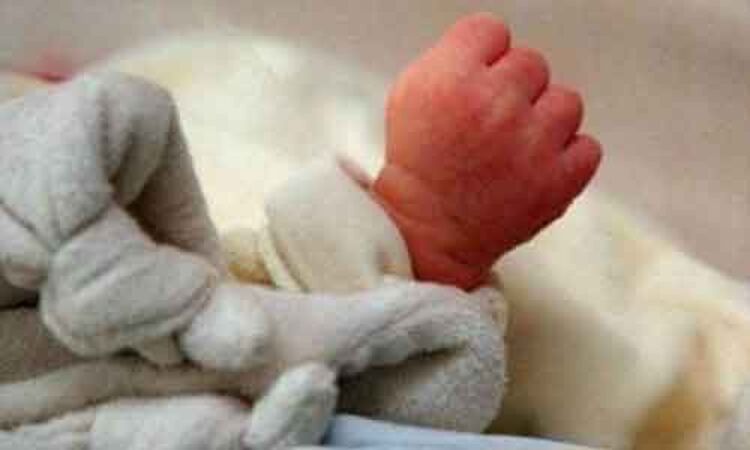- Home
- Medical news & Guidelines
- Anesthesiology
- Cardiology and CTVS
- Critical Care
- Dentistry
- Dermatology
- Diabetes and Endocrinology
- ENT
- Gastroenterology
- Medicine
- Nephrology
- Neurology
- Obstretics-Gynaecology
- Oncology
- Ophthalmology
- Orthopaedics
- Pediatrics-Neonatology
- Psychiatry
- Pulmonology
- Radiology
- Surgery
- Urology
- Laboratory Medicine
- Diet
- Nursing
- Paramedical
- Physiotherapy
- Health news
- Fact Check
- Bone Health Fact Check
- Brain Health Fact Check
- Cancer Related Fact Check
- Child Care Fact Check
- Dental and oral health fact check
- Diabetes and metabolic health fact check
- Diet and Nutrition Fact Check
- Eye and ENT Care Fact Check
- Fitness fact check
- Gut health fact check
- Heart health fact check
- Kidney health fact check
- Medical education fact check
- Men's health fact check
- Respiratory fact check
- Skin and hair care fact check
- Vaccine and Immunization fact check
- Women's health fact check
- AYUSH
- State News
- Andaman and Nicobar Islands
- Andhra Pradesh
- Arunachal Pradesh
- Assam
- Bihar
- Chandigarh
- Chattisgarh
- Dadra and Nagar Haveli
- Daman and Diu
- Delhi
- Goa
- Gujarat
- Haryana
- Himachal Pradesh
- Jammu & Kashmir
- Jharkhand
- Karnataka
- Kerala
- Ladakh
- Lakshadweep
- Madhya Pradesh
- Maharashtra
- Manipur
- Meghalaya
- Mizoram
- Nagaland
- Odisha
- Puducherry
- Punjab
- Rajasthan
- Sikkim
- Tamil Nadu
- Telangana
- Tripura
- Uttar Pradesh
- Uttrakhand
- West Bengal
- Medical Education
- Industry
Baby-wearing products lead to higher risk of injury, hospitalizations in infants

ITASCA, IL - Baby-wearing products are an increasingly popular way to carry a young child in a sling, soft carrier or other type of device, but new research suggests that they can pose a higher risk of injury to children under age 1.
The study abstract, "Baby Wearing Injuries Presenting to Emergency Departments, 2011-2020: A Dangerous Fashion Trend," -- presented during the virtual American Academy of Pediatrics 2021 National Conference & Exhibition -- shows that young children are not only more likely to sustain injury related to baby wearing but have a higher frequency of being hospitalized after the injury.
"The most precious thing a parent will ever wear is their child," said author CPT Samantha Rowe, MD, MC, USA. "But like when buying a new pair of shoes, parents must be educated on the proper sizing, selection and wear of baby carriers to prevent injury to themselves and their child."
Baby-wearing, also known as baby carrying, is a common form of attachment parenting that dates back to prehistoric times. Over the last decade, baby-wearing has demonstrated many benefits, including improved success with breastfeeding, improved infant to parent bonding, and improved attentiveness by fathers.
The researchers sought to characterize the epidemiology and impact of baby-wearing related injuries presenting to U.S. emergency departments. They reviewed 14,024 cases of baby-wearing injuries reported to the National Electronic Injury Surveillance System from 2011 to 2020 and found that 61% of children of injuries occurred in children aged 0-5 months with 19.3% of these infants requiring hospitalization, and 83.7% of these children injuring their heads. A total 18.1% of head injuries related to a baby-wearing product led to hospitalization.
More than one out of five – or 22% -- of all injuries were associated with the caregiving falling. The authors found seven cases of cardiopulmonary arrest.
About 30% of baby-wearing injuries were associated with sling carriers, and 45% associated with non-specified types of baby carriers.
The authors suggest there is a need for more rigorous parental education regarding the use of baby carriers. They found a wide variety of products on the market, with most designed with additional space in the bust for breastfeeding women. This may increase the risk of injury to children when the product is worn by men.
Hina Zahid Joined Medical Dialogue in 2017 with a passion to work as a Reporter. She coordinates with various national and international journals and association and covers all the stories related to Medical guidelines, Medical Journals, rare medical surgeries as well as all the updates in the medical field. Email: editorial@medicaldialogues.in. Contact no. 011-43720751
Dr Kamal Kant Kohli-MBBS, DTCD- a chest specialist with more than 30 years of practice and a flair for writing clinical articles, Dr Kamal Kant Kohli joined Medical Dialogues as a Chief Editor of Medical News. Besides writing articles, as an editor, he proofreads and verifies all the medical content published on Medical Dialogues including those coming from journals, studies,medical conferences,guidelines etc. Email: drkohli@medicaldialogues.in. Contact no. 011-43720751


